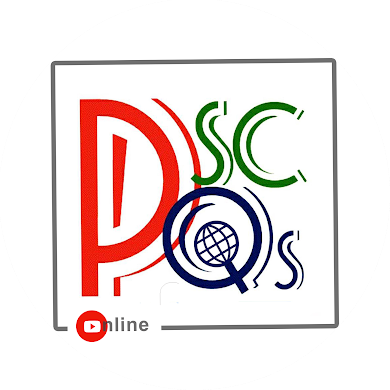Following are the questions and answers to the Higher Secondary School Teacher - Economics in Education Department conduct by Kerala Public Service Commission on 07.03.2017. We expect this will help the candidates who are preparing for the Higher Secondary School Teacher and other degree level exams. The purpose of this section is just to support the candidates who prepare for Kerala PSC and other competitive exams. You can always refer this website from your mobile phone on the go or from your home PC.
HSST - ECONOMICS [SR for SC/ST]
[KERALA HIGHER SECONDARY EDUCATION DEPARTMENT]
Kerala PSC Fully Solved Question Paper 2017 for Practice | Exam held on 07.03.2017
PART - 3 | QUESTIONS : 41-60
PART - 3 | QUESTIONS : 41-60
41] The value of Marginal propensity to consume is
[a] >1
[b] between 0 and 1
[c] between 1 and 2
[d] none of the above
42] Which of the following schools of thought follow adaptive expectations?
[a] New Classical
[b] Real Business Cycle
[c] New Keynesian
[d] Orthodox Monetarist
43] Insider outsider model explains
[a] Insider trading
[b] Internal and external trade
[c] Wage rigidity
[d] Interest elasticity of investment
44] Classical economists believed in
[a] Market clearing
[b] Says law of markets
[c] Neutrality of money
[d] All of the above
45] The concept of Natural Rate of unemployment is primarily associated with
[a] Milton Friedman
[b] George Akerlof
[c] Bohm Baverk
[d] Mises-Hayek
46] In the region of liquidity trap the interest elasticity of money is
[a] 0
[b] very low
[c] very high
[d] none of the above
47] Phillips curve shows the relation between
[a] tax rate and total revenue
[b] inflation and unemployment
[c] interest rate and investment
[d] income and consumption
48] Which of the following schools believe that forces determining trend growth in an economy are not different from those causing fluctuations so that they consider analysis of growth inseparable from analysis of fluctuations in economic activity?
[a] Real business cycle
[b] Keynesian
[c] Monetarist
[d] All of the above
49] Post Keynesians believe that Fluctuations in economic activity arise due to
[a] Demand side factors
[b] Supply side factors
[c] Both demand and supply side factors
[d] None of the above
50] Relative income hypothesis is primarily associated with
[a] Milton Friedman
[b] J.S. Duesenberry
[c] F. Modigliani
[d] M.J. Farrel
51] Two unbiased dies are tossed simultaneously, what is the probability that the sum of the outcomes would be eleven
[a] 1/4
[b] 1/18
[c] 1/36
[d] 1/6
52] The value of second order differential of (Total Revenue - Total Cost) a profit maximiser will be
[a] zero
[b] positive
[c] negative
[d] not defined
53] The difference between collected data and actual value is called
[a] random error
[b] statistical error
[c] sampling error
[d] both (2) and (3)
54] Which of the following is known as parametric test?
[a] F-test
[b] Z-test
[c] t-test
[d] All the above
55] Inverse probability is also known as
[a] Bayesian probability
[b] Neyman probability
[c] Egon probability
[d] Poisson probability
56] In a college 60% of the students play football, 50% of the students play basketball, 30% of the students play both football and basketball. Find the probability that students play neither of the sports
[a] 80
[b] 0.90
[c] 0.50
[d] 0.20
57] In a regression involving time series data with successive observations showing interdependency, i.e. `"E (U_iU_j)" !=0` this is popularly known as
[a] Linear correlation
[b] Auto correlation
[c] Non-linearcorrelation
[d] Multicollinearity
58] In economic analysis when dependent variables are essentially qualitative we make use of
[a] Spearman Co-efficient
[b] Quality variables
[c] Dummy variables
[d] Estimator
59] Accepting a hypothesis which is false is called
[a] Type I Error
[b] Type II Error
[c] Absolute error
[d] More information required
60] In matrix, inverse is defined only in case of
[a] Singular matrix
[b] Non-singular matrix
[c] Row matrix
[d] Plural matrix
Keyword: Higher Secondary School Teacher - HSST - Economics - Kerala Higher Secondary Education Kerala PSC Previous Year Questions | Higher Secondary School Teacher - HSST - Economics - Kerala Higher Secondary Education Previous Question Bank | Higher Secondary School Teacher - HSST - Economics - Kerala Higher Secondary Education Fully Solved Question Paper 2016 | Higher Secondary School Teacher - HSST - Economics - Kerala Higher Secondary Education exam preparation | Higher Secondary School Teacher - HSST - Economics - Kerala Higher Secondary Education Model Questions Paper | Higher Secondary School Teacher - HSST - Economics - Kerala Higher Secondary Education Kerala PSC repeated Questions | Higher Secondary School Teacher - HSST - Economics - Kerala Higher Secondary Education Kerala PSC frequently asked questions | How to prepare Higher Secondary School Teacher - HSST - Economics - Kerala Higher Secondary Education exam | A to Z questions for Kerala PSC Higher Secondary School Teacher - HSST - Economics - Kerala Higher Secondary Education exams | Detailed Syllabus based questions for Kerala PSC Higher Secondary School Teacher - HSST - Economics - Kerala Higher Secondary Education exams | Previous Question bank for Higher Secondary School Teacher - HSST - Economics - Kerala Higher Secondary Education exam | Higher Secondary School Teacher - HSST - Economics - Kerala Higher Secondary Education final answer keys | Higher Secondary School Teacher - HSST - Economics - Kerala Higher Secondary Education Solved Questions | Study materials for Kerala PSC Higher Secondary School Teacher - HSST - Economics - Kerala Higher Secondary Education exams | Recent Kerala PSC Questions for Higher Secondary School Teacher - HSST - Economics - Kerala Higher Secondary Education exams | Current Affairs questions for Higher Secondary School Teacher - HSST - Economics - Kerala Higher Secondary Education exams






0 Comments